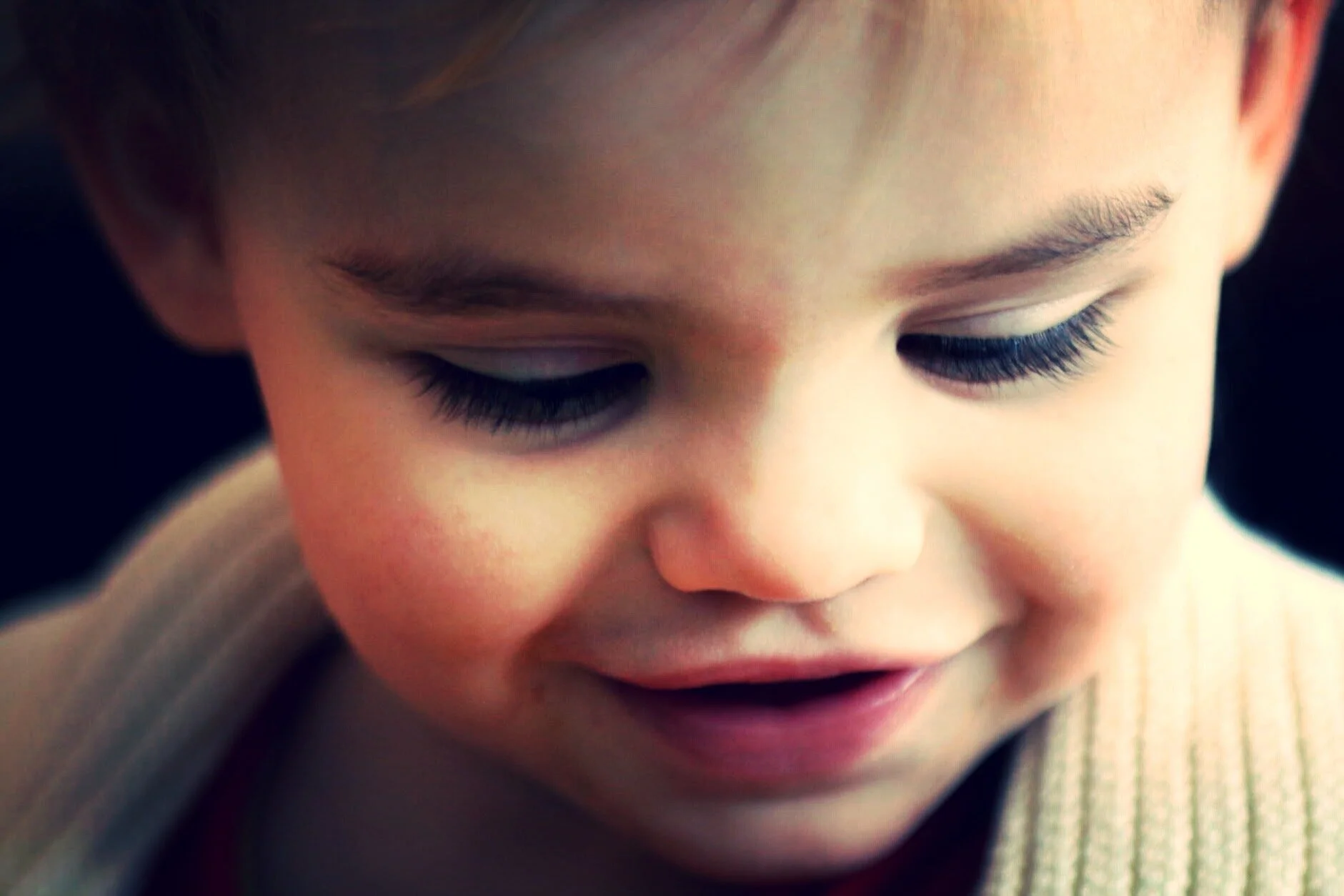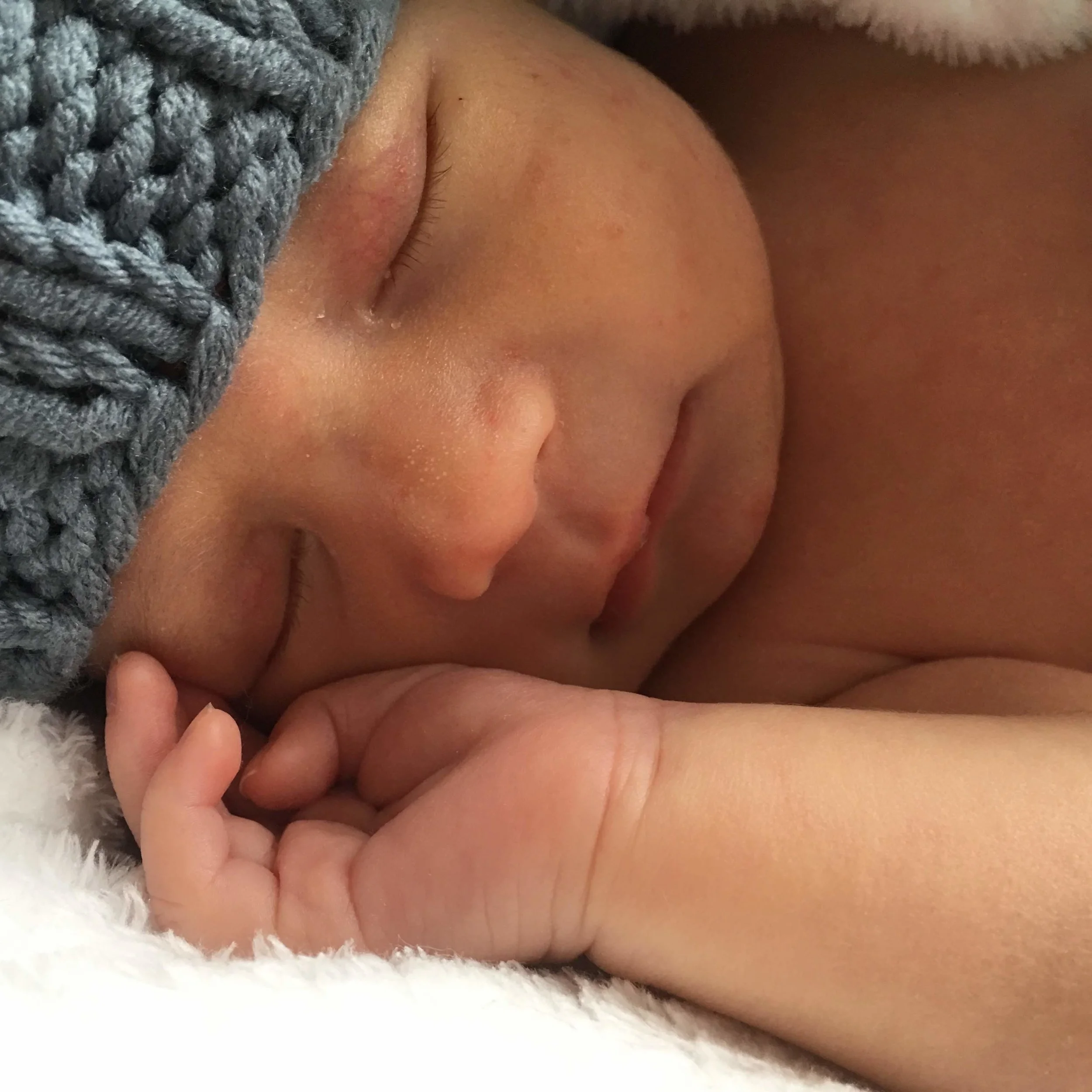
It all started when...
Like a baby, Goo Goo Gaa Gaa: The Baby Talk Dictionary and Phrase Book is the result of a fortuitous meeting, a pleasurable experience, months of development and seemingly endless hours of labor - although not necessarily in that order.
In this case the pleasurable experience came before the fortuitous meeting. One summer afternoon, Peter Gaido took his six-month-old son to his first baseball game. In the sixth inning, as father was explaining to son the intricacies of the double switch, something suddenly struck him. It was a baseball, not an idea. A screaming foul ball had hit Peter right on the head.
Aside from a bruised cranium, Gaido was fine. He noticed, however, that his son was no longer cooing and gurgling unintelligibly, but rather he was speaking in fully formed sentences. When his son said that he didn't care about the batting averages or the double switch, but wanted to go to the concession stand again, Gaido realized that his baby's seemingly nonsensical noises were actually another fully formed language. A language which he now understood.
When Gaido found himself comprehending the jargon of other babies as well, he knew he was onto something. In due course, Gaido began speaking the language he dubbed "BABY" and became its first known adult speaker. Blessed with this facility, he sought out a means to take advantage of his talent. He joined the circus and became known as "The incredible BABY Talking Man." The act never gained much popularity, and after a run-in with the bearded lady, Gaido was expelled from the circus. Out of a job, and with little direction, he realized that rather than try to profit from his gift, the true value would come by imparting it unto others. The idea of a dictionary and phrase book took hold.
The only problem was that Gaido was not a formal linguist or lexicographer. He needed a professional to bring the BABY Talk Dictionary to fruition. He found Marc Jaffe instead. Gaido spotted Jaffe talking to a statue in a local park. Thinking that if Jaffe could communicate with the seemingly silent icons, then perhaps he could understand BABY. Sure enough, Jaffe was working on his doctorate in obscure languages. All he had left to do was convince an accredited university that there should be a degree in obscure languages. Jaffe was thrilled with the possibility of BABY, and immediately set about to do the research that would garner his doctorate.
In order to familiarize himself with BABY, Jaffe isolated himself on a tropical island with 18 volunteer babies and only a volleyball for adult companionship. Two weeks later, he returned a changed man. He still couldn't understand BABY, but now he didn't even want to. That's when Gaido hit him in the head with a baseball. Jaffe immediately began speaking BABY, and the BABY Talk Dictionary was about to become a reality.
Gaido and Jaffe went on to observe and note, research and record for many long hours to cull the most useful words of the baby language. Goo Goo Gaa Gaa: The Baby Talk Dictionary and Phrase Book is the result of that work. Through its publication, they hope to fulfill a pledge made to their closest baby friends that they would bridge the communication gap.
Here they hope to provide the translations adults need to become literate in BABY. And most importantly, they don't want you to have to get hit in the head with a baseball.
PETER GAIDO
Peter Gaido is one of the funniest lawyers at the firm of Gaido & Fintzen. Either that says something good about his sense of humor or something bad about his lawyering ability. Peter lives with in St. Charles, Illinois.
MARC JAFFE
Marc Jaffe is a father by day, a comedy writer by night and a Major League Baseball player on weekends and holidays. Or at least he would be if he wasn't so busy writing comedy and being a dad and, oh yeah, could hit a 95 MPH fastball. Marc is most recognized as a writer for the television show Seinfeld and as the author of the highly-acclaimed, hysterical book, Sleeping With Your Gynecologist - Tales From My Marriage to an OB/GYN. He has written screenplays, penned pieces for Readers Digest and been a commentator on NPR's Marketplace. But for you, he's always got time.
Sample
![file-45[1196109].jpeg](https://images.squarespace-cdn.com/content/v1/5ce483cce31d380001db0e0d/1558575953875-JD7GM2TSVB4GH19Y4CT9/file-45%5B1196109%5D.jpeg)
(Excerpt from Chapter 8)
SLEEPING UPRIGHT
For ages, adults have debated which sleeping position is best for Baby. While parents and physicians have their own ideas, the only certainty is that your child prefers to sleep standing up. Of course, that's you who is standing, not the child. And you are holding her while standing. And you must maintain that position until you lose all feeling in your extremities. At that point, you are actually relieved to no longer have any feeling. Below are some sleep positions, in case you want to try to convince your child to slumber in a manner more comfortable for you.
Spi zzzz Sleeping on back
Spi zzzzseele Sleeping on back with legs and arms spread as if making a snow angel
Zeedaffy Sleeping on back with both legs together and bent to one side
Tum zzzz Sleeping on stomach
Woom zzz Sleeping in fetal position, on side
Tushiz upzzz Sleeping with butt in the air
Thupplezzz Sleeping with thumb or pacifier in mouth
Thupplukaezzz Sleeping with thumb in mouth after blanket wraps around thumb
Zeenoos Getting stuck in a tangled-up blanket
Slipzee Sleeping with one extremity extending between the crib pillars and outside the crib
Zeelux Maneuver in which baby completes a half turn in his sleep, leaving his head on the opposite side of the crib from where it was when he fell asleep
HudiniZeelux Zeelux while wrapped in a swaddle
Z sling Nap while in snuggly
Z hi Nap while in backpack
Z zoom Nap in car seat
Z bst Nap while resting on shoulder
Diz z Sleep after parent has walked in circles around the nursery for an hour
THE TRANSFER
Since your infant prefers to fall asleep anyplace other than her crib, you will have to transfer her to the crib in order to be free to go about your day or get some sleep in your own bed. This transfer is a delicate procedure as even the slightest misstep can wake your child. Here are some of the more common maneuvers:
Geer dn Airplane landing - Holding baby on stomach and floating him as if coming in for a landing
Swich roo The Substitute - Placing a form-fitted cushion next to your shoulder and moving baby over so that she thinks she's still on your shoulder
Laway The Bait and Switch - Like the Swich roo, the theory here is to lead the baby to believe you are staying next to him while he is sleeping. With the Laway, you actually lay down in bed with your baby and then gently (after counting to 100) roll away and off the end of the bed
Fibbr The Con - Telling the baby a direct lie (i.e., I will be right back, I'm just going to get some tissues) and hope that she falls asleep before figuring out you're not coming back
Yahbaybee The Smooth Operator - Relatively seamless, unobstructed and bump-free transfer from your arms to the crib
Boingy The Trampoline - Getting baby used to up and down motion so that when you accidentally bounce him in the crib it doesn't wake him
Ooop The Flop - random, awkward position baby is in when dropped into crib after he fell asleep on your shoulder and you tried unsuccessfully to negotiate the Smooth Operator transfer. You want to avoid this, but many babies sleep through it
Wooflet The Pet - You rub baby's head in a soothing manner with one hand as you place her gently in the crib and continue rubbing, hoping the uninterrupted petting keeps her distracted from the transfer
Kay si Kay sum The Serenade - Like the Wooflet, but using songs instead of the rub. You sing a variety of lullabies and, during the third song of a five-song set, place him gently in the crib and continue singing to distract him from the transfer. One example of a five-song set that works well for The Serenade is:
The Rainbow Connection
Kermit the Frog's version - slows the pace down and gets baby into the initial sleep stageReturn to Pooh Corner
Kenny Loggins from Return to Pooh Corner - this song's good soothing pace and long length will put baby to sleep or in a pre-sleep tranceLullaby and Goodnight
Humming version - Pivotal song is purely relaxing and, importantly, has no words so you can concentrate exclusively on the smooth transferFools Rush In
Elvis - Baby drops into deep sleep following transfer release. If Elvis can't close the deal, nobody canFly Me To The Moon
Frank Sinatra - The authors like to hear themselves sing this one. Actually not conducive to sleep, but by this time your baby is already sleeping so it doesn't matter
The End
![file-46[1195730].jpeg](https://images.squarespace-cdn.com/content/v1/5ce483cce31d380001db0e0d/1558576301366-Y4OY28HEFLY1I21FN2JB/file-46%5B1195730%5D.jpeg)
